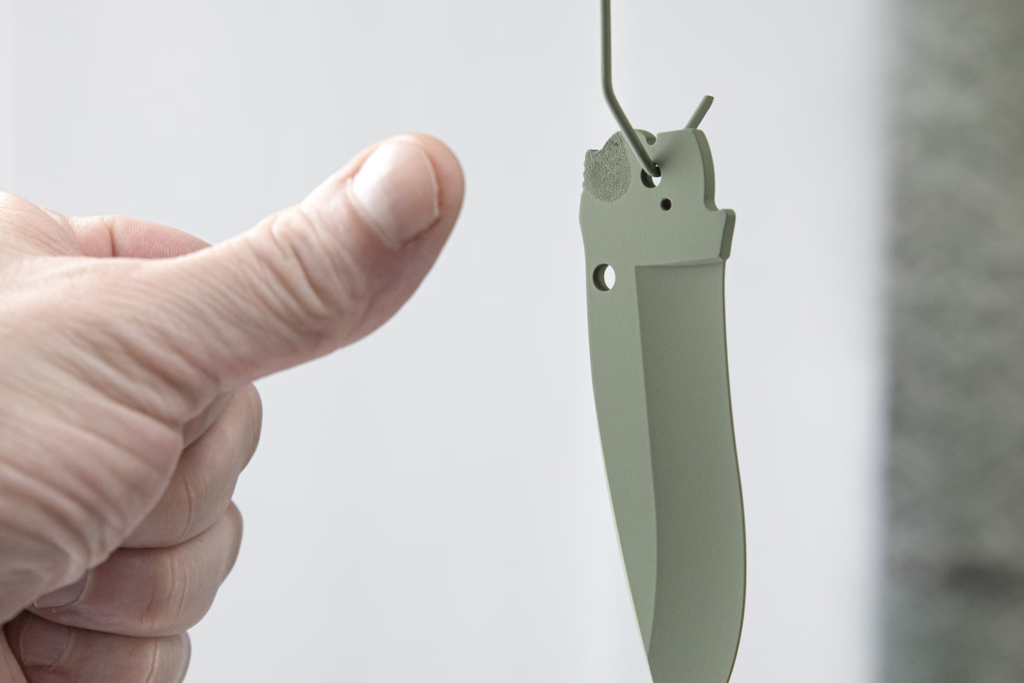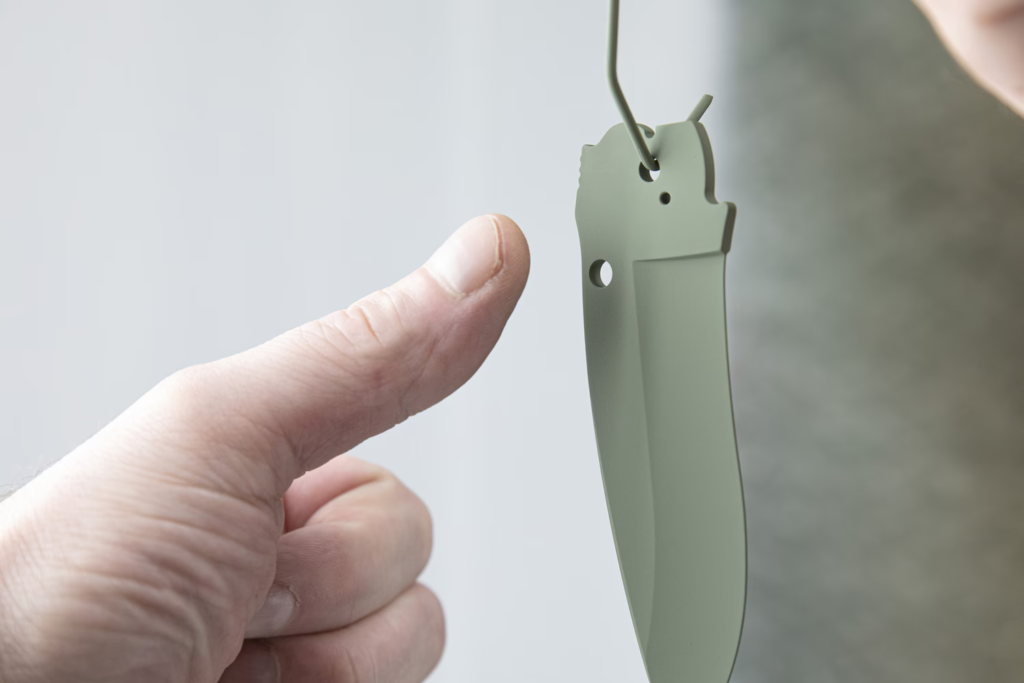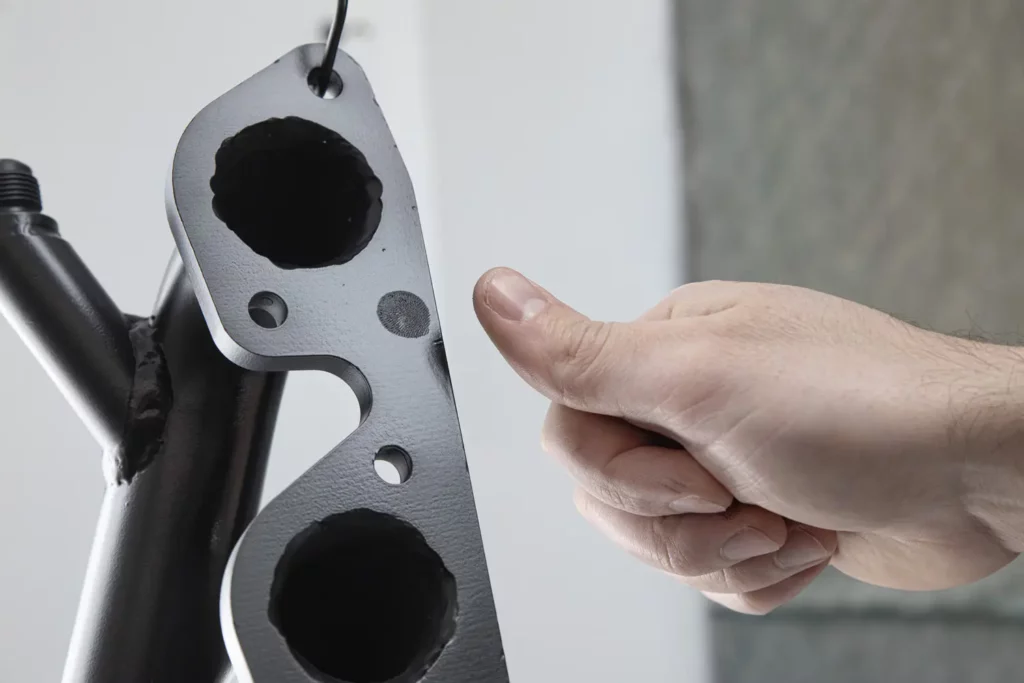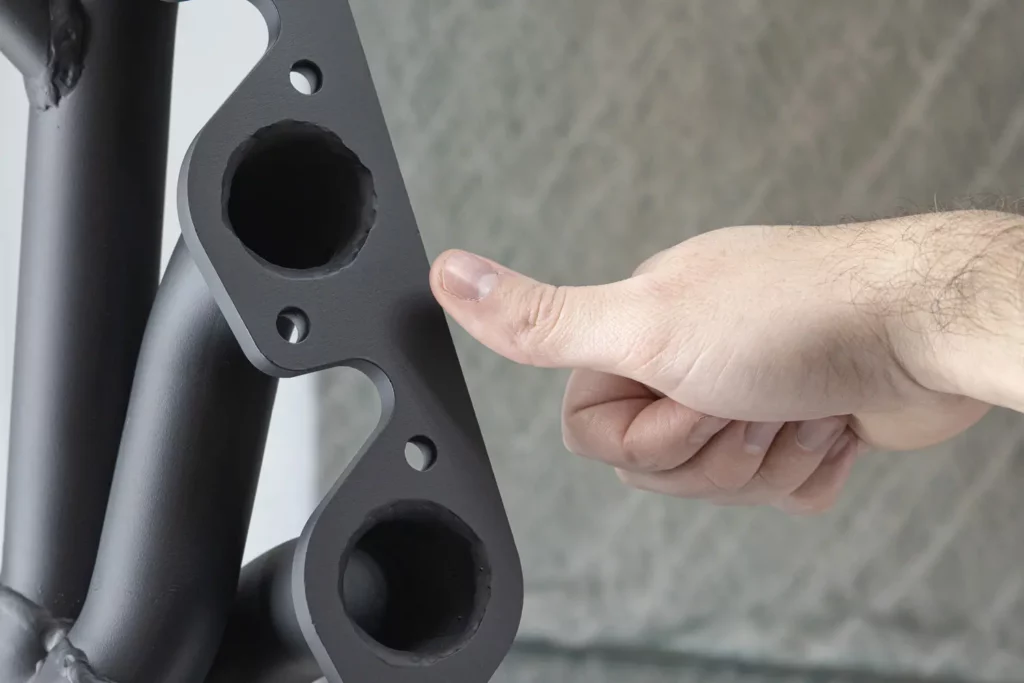Candidature et formation
Sans harnais
LA SÉRIE H ET LA SÉRIE ELITE PERMETTENT D'ATTEINDRE LA LIBERTÉ D'ARRIMAGE
(CURE THERMIQUE)
Après l'application d'une couche de Cerakote, les pièces sont flashées et placées dans un four préchauffé à 150°F-180°F. L'absence de poisse est obtenue en 10 à 30 minutes, en fonction de la couleur et de la densité du substrat ; ce processus d'obtention de l'absence de poisse est connu sous le nom de "Tack Free". Polymérisation flash.
COMMENT VÉRIFIER QUE LA SELLERIE EST LIBRE
Une fois les pièces revêtues et placées dans un four pour la polymérisation flash, réglez une minuterie sur 10 minutes. Après les 10 minutes de cuisson flash, vérifiez que la pièce n'est pas poisseuse en appuyant légèrement sur la surface à un endroit peu visible avec votre doigt. Si la pièce est encore collante et laisse une empreinte, continuez à vérifier toutes les 5 minutes jusqu'à ce qu'il n'y ait plus d'empreinte.

PARTIE SOUS-FLASHÉE, EMPREINTE DU TEST DE PRESSION DU DOIGT.

PIÈCE FLASH DURCIE JUSQU'À L'ABSENCE D'ADHÉRENCE
Une fois que les pièces sont exemptes d'adhérence, retirez-les du four et laissez-les refroidir avant de les manipuler ou d'ajouter d'autres couches de revêtement.
LA SÉRIE C ET LA SÉRIE GLACIER PERMETTENT D'OBTENIR DES RÉSULTATS SANS POINT D'ANCRAGE
(CURE D'AIR)
Après l'application d'une couche de Cerakote, les pièces sont soumises à un flash ambiant jusqu'à ce qu'elles soient exemptes de poisse. Le temps de mise hors tension est de 45 à 60 minutes, en fonction de la couleur et des températures ambiantes.
COMMENT VÉRIFIER QUE LA SELLERIE EST LIBRE
Une fois la dernière couche appliquée, régler une minuterie de 45 minutes pour laisser les pièces s'éclairer à l'air libre. Après les 45 minutes de flash ambiant, vérifiez que la pièce n'est pas poisseuse en appuyant légèrement sur la surface avec votre doigt à un endroit peu visible. Si la pièce est encore collante et laisse une empreinte, continuez à vérifier toutes les 5 minutes jusqu'à ce qu'il n'y ait plus d'empreinte.

PARTIE SOUS-FLASHÉE, EMPREINTE DU TEST DE PRESSION DU DOIGT.

PARTIE SOUS-FLASHÉE, EMPREINTE DU TEST DE PRESSION DU DOIGT.
Une fois exemptes de poisse, les pièces sont prêtes à être manipulées ou à recevoir des couches de revêtement supplémentaires.
QUAND EST-IL IMPORTANT D'OBTENIR UNE ABSENCE DE SELLERIE ?
PERSONNALISATION
L'ADHÉRENCE ENTRE LES COUCHES
Lors de la superposition de couleurs dans le cadre de projets personnalisés, il est impératif de vérifier l'absence de poisse entre les couches de revêtement afin d'obtenir une adhérence optimale entre les couches. Le fait de laisser le revêtement durcir au-delà du Tack-Free peut entraîner une mauvaise adhérence entre les couches.
APPLICATION DE POCHOIRS EN VINYLE
Au cours du processus de stratification des couleurs, vous devrez veiller à ce que les pochoirs vinyles ne collent pas lorsque vous les ajoutez ou les retirez. Si une pièce n'est pas sans adhérence, cela peut entraîner des défauts de finition ou une délamination du revêtement.
MANIPULATION
Si une pièce n'est pas non collante avant d'être manipulée, vous laisserez des empreintes/défauts qui seront présents une fois durcis. Veillez toujours à ce que votre pièce ne soit pas poisseuse avant de la manipuler.
